The Good Things That AI Can Do for Humans

Artificial intelligence stands at a crossroads of unprecedented potential and measured uncertainty. Recent breakthroughs demonstrate AI’s capacity to detect diseases earlier than human physicians, personalize educational experiences for struggling students, and restore communication abilities to individuals with disabilities. These developments suggest a future where technology amplifies human capabilities rather than replacing them. Yet beneath these promising applications lies a more complex question: which specific transformations will prove most meaningful for society‘s most pressing challenges?
Key Takeaways
- AI enables early disease detection through medical imaging analysis and predictive analytics, improving diagnostic accuracy and treatment outcomes.
- Personalized learning systems adapt to individual student needs, identifying knowledge gaps and providing customized educational resources in real-time.
- Precision farming optimizes resource use and crop yields while reducing environmental impact through targeted pest control and sustainable practices.
- Assistive technologies enhance independence for people with disabilities through voice recognition, screen readers, and AI-powered prosthetic devices.
- Mental health support systems provide 24/7 crisis intervention and early warning detection through behavioral pattern analysis and automated assistance.
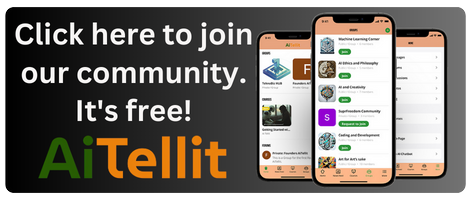
Revolutionizing Healthcare Through Early Detection and Personalized Treatment
While traditional healthcare has long relied on reactive approaches to treat diseases after symptoms appear, artificial intelligence is fundamentally transforming medical practice by enabling proactive identification of health risks and customized therapeutic interventions.
Machine learning algorithms analyze vast datasets from medical imaging, genetic profiles, and electronic health records to detect cancer, cardiovascular disease, and neurological conditions before clinical symptoms manifest.
Predictive analytics models process patient data to forecast disease progression and treatment responses, allowing physicians to tailor interventions based on individual genetic markers and medical histories.
Enhanced patient engagement through AI-powered applications provides personalized health recommendations and medication adherence monitoring.
Early studies demonstrate promising results in improving diagnostic accuracy and treatment outcomes, though continued research remains essential for validating long-term effectiveness across diverse populations.
Transforming Education With Adaptive Learning and Accessibility Tools
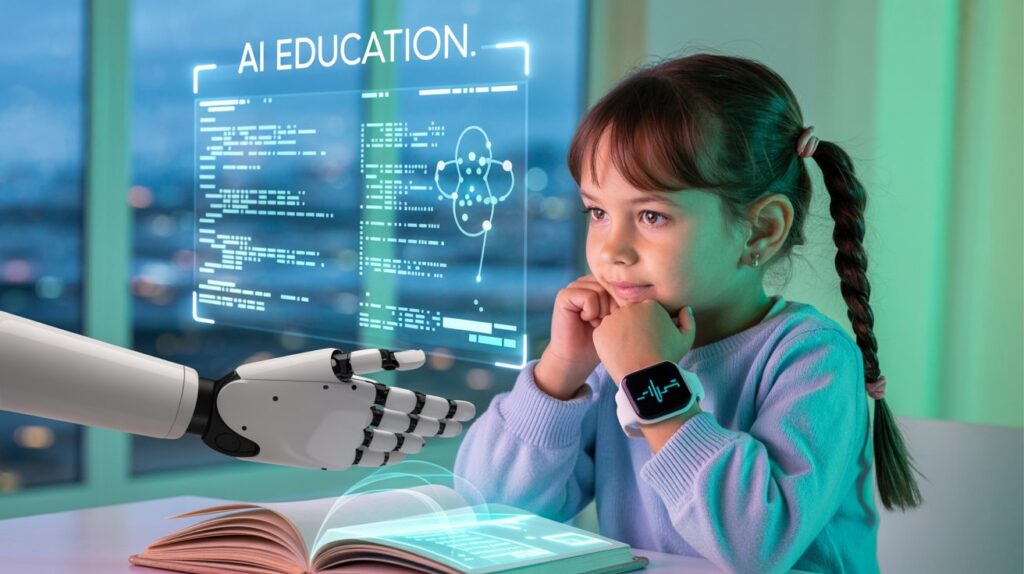
Artificial intelligence is reshaping educational landscapes by creating individualized learning experiences that adapt to each student’s unique needs and capabilities.
Modern AI systems can monitor student progress in real-time, identifying knowledge gaps and adjusting instructional content accordingly while providing educators with actionable insights into learning patterns.
These technologies are particularly transformative in their ability to break down traditional barriers to education, offering specialized accessibility features that guarantee students with diverse learning needs can participate fully in the educational process.
Personalized Learning Paths
As educational institutions increasingly recognize that students learn at different paces and through different methods, AI-powered personalized learning systems are emerging as transformative tools that adapt instruction to individual needs and capabilities.
These platforms utilize sophisticated algorithms to analyze student performance patterns, identifying knowledge gaps and learning preferences in real-time. Through adaptive assessment technologies, educators can pinpoint specific areas where students struggle and automatically adjust difficulty levels accordingly.
The systems deliver tailored resources that match individual learning styles, whether visual, auditory, or kinesthetic. Students receive customized content recommendations, practice exercises, and supplementary materials based on their progress and comprehension levels.
Early research indicates improved engagement and retention rates, though long-term effectiveness studies remain ongoing. This personalized approach shows promise for addressing diverse educational needs while maintaining rigorous academic standards.
Real-Time Progress Tracking
Beyond simply adapting content delivery, AI-powered educational platforms now provide educators with unprecedented visibility into student learning through continuous progress monitoring systems.
These platforms collect and analyze real time analytics as students interact with educational content, tracking engagement patterns, completion rates, and comprehension levels. Teachers receive instant feedback on individual and class-wide performance metrics, enabling swift intervention when students struggle with specific concepts.
This immediate insight transforms traditional assessment approaches, moving beyond periodic testing to continuous evaluation. Educators can identify learning gaps before they become significant obstacles, adjusting instruction strategies accordingly.
Students benefit from timely support and recognition of their achievements. However, the effectiveness of these systems depends heavily on thoughtful implementation and teacher training to interpret data meaningfully rather than overwhelming educators with excessive information.
Inclusive Accessibility Features
While real-time progress tracking enhances educational monitoring, AI-powered accessibility features are fundamentally reshaping how diverse learners engage with educational content.
Voice recognition technology enables students with mobility limitations or learning differences to interact with educational platforms through spoken commands, reducing barriers to participation.
Visual aids powered by AI can automatically generate captions, translate text into multiple languages, and convert written content into audio formats for students with visual impairments or reading difficulties.
These adaptive tools demonstrate measurable improvements in engagement rates among previously underserved student populations.
Early research indicates that institutions implementing thorough AI accessibility features report increased completion rates and improved learning outcomes across diverse demographics.
However, successful implementation requires careful consideration of individual needs and ongoing refinement to guarantee these technologies genuinely enhance rather than complicate the learning experience.
Enhancing Agricultural Productivity While Protecting Environmental Resources
Modern agriculture faces the dual challenge of feeding a growing global population while minimizing environmental impact, and artificial intelligence offers promising solutions to address both concerns simultaneously.
AI-powered precision farming systems analyze soil conditions, weather patterns, and crop health to enhance resource allocation. These technologies enable farmers to apply fertilizers, pesticides, and water only where needed, reducing chemical runoff and conserving water resources.
Machine learning algorithms process satellite imagery and sensor data to detect early signs of disease or pest infestations, allowing targeted interventions that minimize environmental disruption.
AI also supports sustainable practices by enhancing crop rotation schedules and predicting ideal planting times. While implementation costs remain significant, early adopters report reduced input costs and improved yields, suggesting AI could help agriculture become more environmentally responsible without sacrificing productivity.
Empowering People With Disabilities Through Assistive Technologies
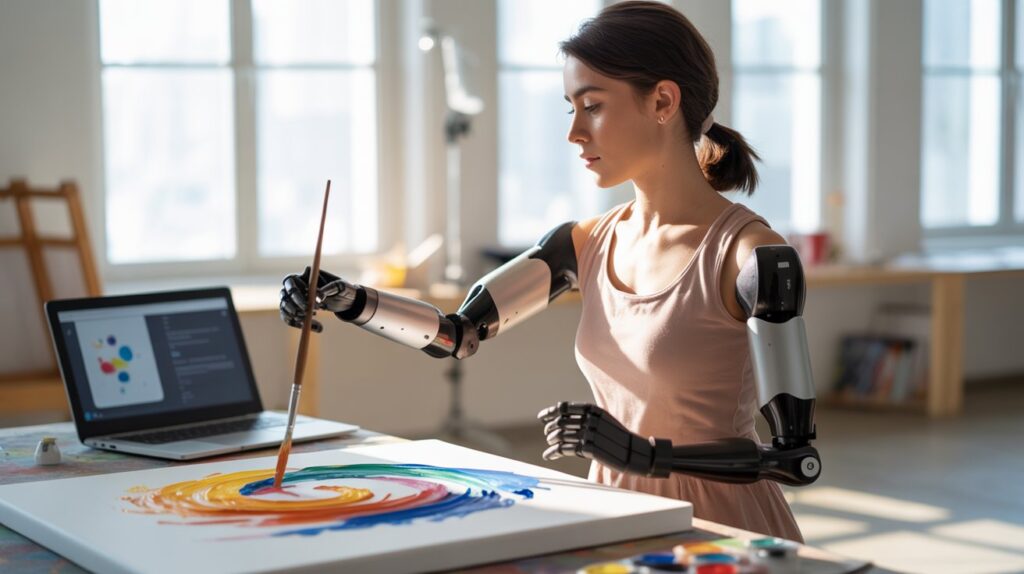
Millions of individuals with disabilities now have access to AI-powered assistive technologies that greatly enhance their independence and quality of life. Voice recognition software enables hands-free computer operation, while smart home systems respond to verbal commands for lighting, temperature, and security controls.
AI-driven screen readers convert text to speech with improved accuracy, and real-time captioning services facilitate communication for hearing-impaired users. Machine learning algorithms power prosthetic limbs that adapt to user movements, while computer vision assists visually impaired individuals through object recognition and navigation guidance.
These assistive devices demonstrate the potential of inclusive design principles in technology development. However, affordability and accessibility remain significant barriers. Research continues to address these challenges while expanding AI capabilities to serve diverse disability communities more effectively.
Accelerating Scientific Research and Drug Discovery
As pharmaceutical companies face the mounting challenge of developing new drugs within increasingly tight timelines, artificial intelligence has emerged as a transformative force in accelerating scientific research and drug discovery processes.
AI systems excel at data analysis, processing vast datasets from genomic sequences, clinical trials, and molecular structures that would take human researchers years to analyze. Through sophisticated predictive modeling, these technologies can identify promising drug candidates, predict potential side effects, and optimize molecular compounds before expensive laboratory testing begins.
Machine learning algorithms have successfully identified existing drugs for new therapeutic applications, reducing development costs considerably. AI-powered platforms can simulate millions of chemical interactions, narrowing focus to the most viable candidates.
While challenges remain in regulatory approval and clinical validation, AI demonstrates considerable potential for reducing drug discovery timelines from decades to years.
Improving Mental Health Support and Crisis Intervention
Artificial intelligence demonstrates significant potential in addressing the global mental health crisis through enhanced accessibility and early intervention capabilities.
AI-powered systems can provide continuous crisis support through automated hotlines, identify behavioral patterns that may indicate deteriorating mental health conditions, and deliver personalized therapeutic interventions tailored to individual needs.
Research indicates these technologies may help bridge critical gaps in mental health services, particularly in underserved communities where traditional resources remain limited.
24/7 Crisis Hotlines
When mental health crises strike, the difference between life and death often depends on immediate access to compassionate, trained support—a reality that has prompted crisis hotlines to explore artificial intelligence as a complement to human counselors.
AI-powered systems can provide immediate triage, analyzing caller tone, speech patterns, and keyword indicators to assess risk levels and route calls appropriately. These tools enhance crisis management by offering 24/7 availability when human counselors are overwhelmed or unavailable.
Natural language processing enables AI to deliver consistent emotional support while connecting individuals to appropriate resources.
However, implementation requires careful oversight. While AI can handle initial screening and provide basic coping strategies, human intervention remains essential for complex situations.
Early pilot programs show promise in reducing wait times and improving response consistency, though long-term effectiveness studies continue.
Early Warning Detection
Beyond immediate crisis response, AI systems now demonstrate remarkable capability in identifying mental health warning signs before they escalate into emergencies. These technologies leverage disease prediction algorithms to analyze patterns in digital behavior, communication changes, and physiological markers that may indicate deteriorating mental health conditions.
Current applications show promising results in three key areas:
- Social media monitoring – Anomaly detection systems identify concerning language patterns, withdrawal behaviors, and emotional distress indicators in online communications.
- Wearable device integration – Sleep patterns, heart rate variability, and activity levels provide early signals of potential mental health episodes.
- Healthcare data analysis – Electronic health records reveal subtle changes in medication adherence, appointment attendance, and symptom reporting.
While these tools require careful privacy considerations, early research suggests they could markedly improve intervention timing and treatment outcomes.
Personalized Therapy Assistance
While traditional therapy relies on standardized approaches, AI-powered personalized therapy assistance adapts treatment strategies to individual patient needs, preferences, and response patterns. Machine learning algorithms analyze patient data, including speech patterns, behavioral indicators, and therapeutic progress, to customize interventions effectively.
Therapeutic chatbots provide 24/7 accessibility, offering immediate support during crisis moments when human therapists are unavailable. These systems can deliver cognitive behavioral therapy techniques, mindfulness exercises, and coping strategies tailored to specific mental health conditions.
AI platforms track emotional wellness metrics, identifying concerning patterns before they escalate into serious episodes. Early research demonstrates promising outcomes in anxiety and depression management.
However, experts emphasize that AI therapy assistance complements rather than replaces human therapeutic relationships, serving as a valuable supplementary tool for thorough mental health care.
Advancing Climate Change Solutions and Environmental Conservation
As global temperatures continue to rise and environmental degradation accelerates, artificial intelligence emerges as a critical tool for addressing humanity’s most pressing ecological challenges.
Machine learning algorithms analyze vast climate datasets to predict weather patterns, optimize renewable energy distribution, and identify carbon emission sources with unprecedented accuracy.
AI applications demonstrate measurable environmental benefits across multiple sectors:
- Smart Grid Management – AI systems balance electricity demand and supply, reducing waste while maximizing renewable energy integration and minimizing overall carbon footprint.
- Precision Agriculture – Machine learning optimizes water usage, fertilizer application, and crop rotation patterns, decreasing environmental impact while maintaining agricultural productivity.
- Wildlife Conservation – Computer vision and satellite imagery enable real-time monitoring of deforestation, illegal hunting, and species migration patterns, supporting targeted conservation efforts.
These technological solutions offer evidence-based pathways toward environmental sustainability when properly implemented.

Frequently Asked Questions
What Are the Main Ethical Concerns Surrounding AI Development and Implementation?
AI development faces critical ethical challenges including algorithmic bias requiring systematic bias mitigation strategies, privacy implications from data collection, establishing clear accountability frameworks for decision-making, and implementing transparency measures to guarantee responsible deployment across sectors.
How Much Will AI Cost to Implement in Small Businesses?
AI implementation costs for small businesses vary considerably, from free basic tools to thousands monthly for advanced systems. Small business budgeting should consider gradual adoption, starting with affordable solutions before scaling up investments.
Will AI Eventually Replace Human Jobs Across All Industries?
Job automation will likely transform the future workforce rather than completely replace it across all industries. While AI may eliminate certain roles, historical evidence suggests technology typically creates new employment opportunities alongside displacement.
What Happens if AI Systems Make Mistakes or Cause Harm?
AI system failures can produce significant error consequences requiring robust accountability frameworks. Organizations are developing thorough harm mitigation strategies including safety protocols, human oversight mechanisms, and liability standards to address potential damages responsibly.
How Can We Ensure AI Remains Under Human Control?
Maintaining AI control requires robust human oversight at every development stage and thorough regulatory frameworks. Technical safeguards, ethical guidelines, and transparent governance structures can help guarantee AI systems remain accountable tools serving human interests responsibly.
Conclusion
AI’s transformative potential across healthcare, education, agriculture, and accessibility demonstrates significant promise for addressing humanity’s most pressing challenges. While early evidence suggests meaningful improvements in disease detection, personalized learning, environmental sustainability, and support for vulnerable populations, realizing these benefits requires careful implementation and ongoing evaluation. The technology’s capacity to enhance human capabilities rather than replace them offers a cautiously optimistic pathway toward more equitable and effective solutions for global well-being.


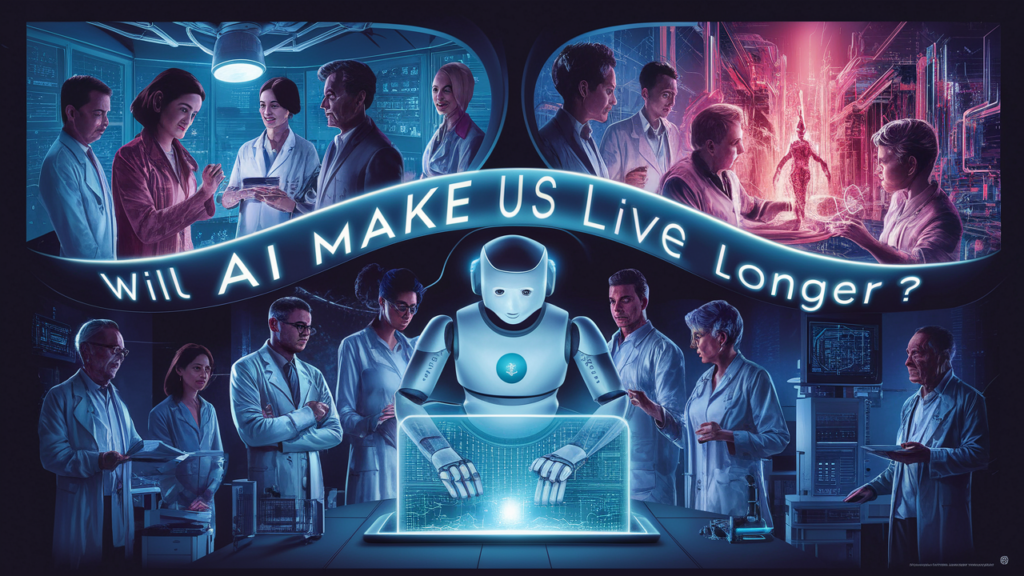

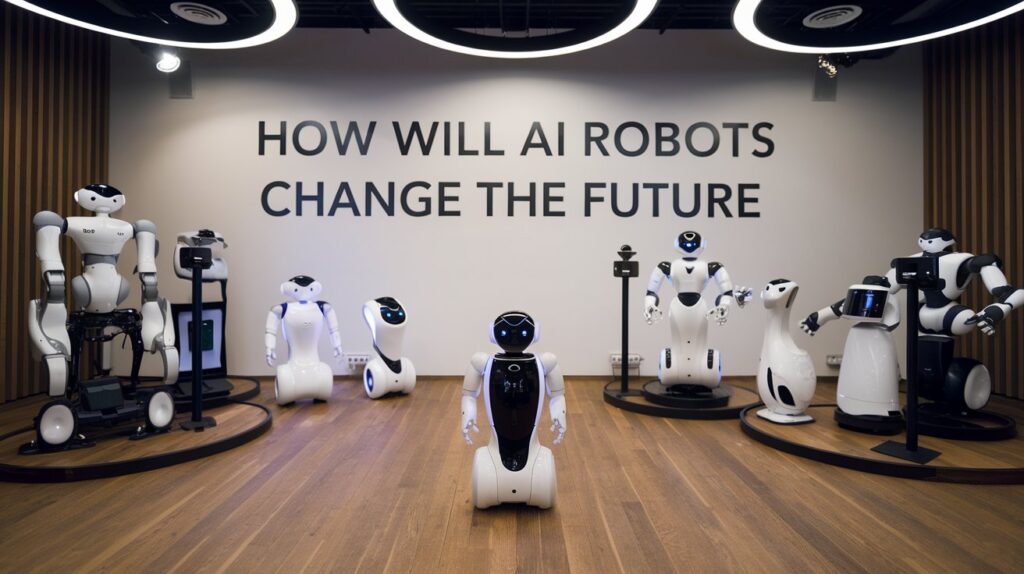


Responses